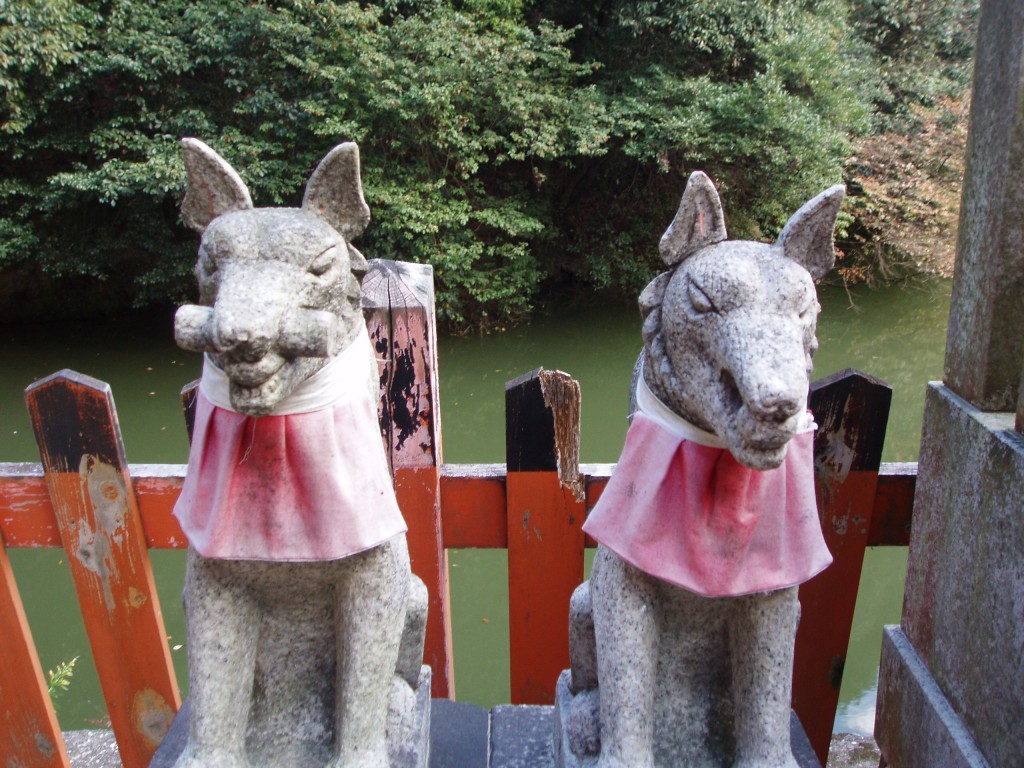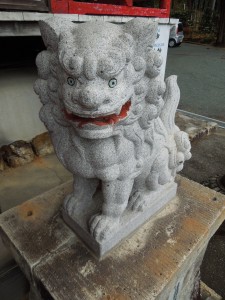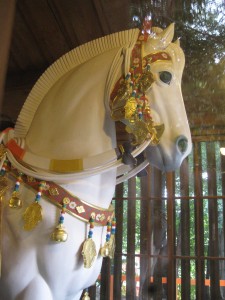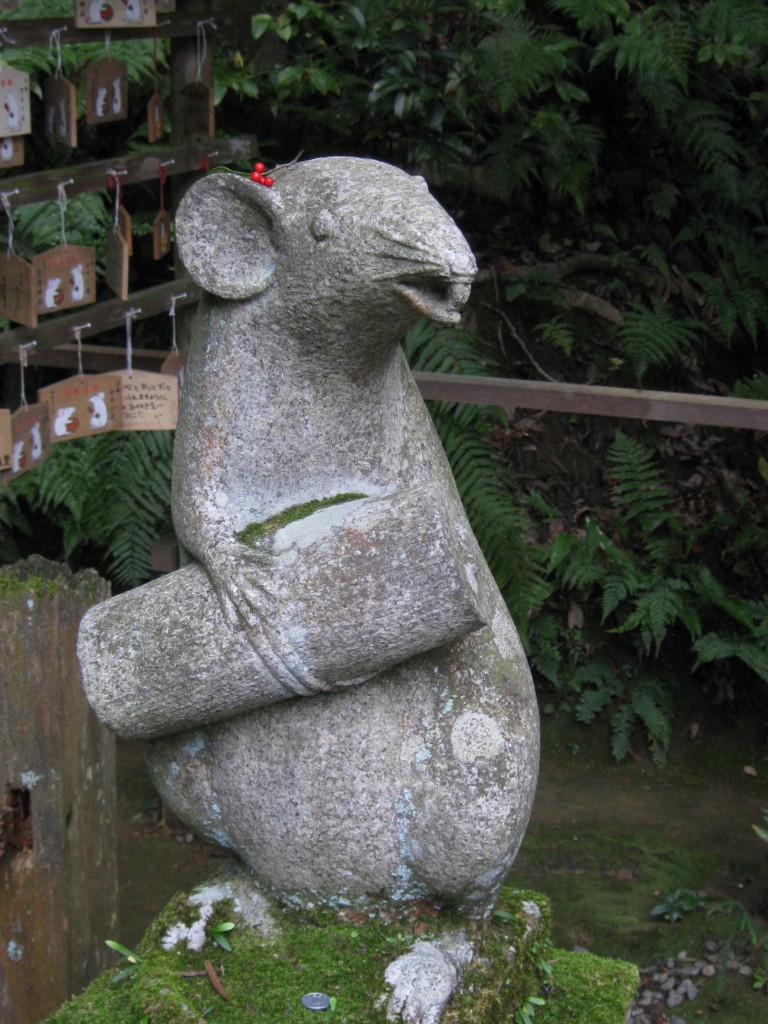
A pair of foxes at Fushimi Inari
“I am in favor of animal rights as well as human rights. That is the way of a whole human being.”
― Abraham Lincoln
*******************************************************************

Shishi shrine guardian
Wherever you look in Shinto, there are animals. Komainu and shishi lions stand as guardians at shrines. Horses are messengers of the kami. Dragons and other animals spout at water basins. Amaterasu used a three-legged crow as a messenger. Kasuga Shrine treasures deer.
Like witches with their cats, kami have familiars. Okuninushi has a rodent. Hachiman has doves (or is it pigeons). Benten has snakes. Amaterasu has cockerels. Tenmangu has an ox. Inari, famously, has foxes.
What is it with Shinto and animals? Or rather what is it about animals and spirituality? There’s a feeling that animals are closer to the spirit world than humans, that their instincts are purer than the complexities of the human mind. Animals can sense earthquakes before we can. Perhaps too they can sense the other-worldly.
Yet though we treasure animals for their sensitivity, that does not stop humans abusing animals on a massive and routine scale. Factory farming, vivisection, unnecessary experiments, hunting, and depletion of habitats are banal, daily occurrences, not to mention the wanton cruelty involved in animal sports such as bull-fighting and fox-hunting. Why, oh why, is there such indifference to animal suffering?
It’s sometimes claimed that as a nature religion Shinto is necessarily animal-friendly. Evidence for this is put forward in the form of rituals carried out to console the souls of dead creatures. Yet the argument makes no sense: if you murdered someone and carried out a ritual for their repose, would it mean you were free of blame?

A splendid white horse statue
If Shinto were as green as this blog would like it to be, it would be standing up to condemn the sickening slaughter of dolphins at Taiji. It would be complaining about the condition of animals in Japan’s zoos, which have been condemned by international experts. It would be arguing for tighter laws against animal cruelty in a country where it is not unusual to see dogs tied up in small spaces. And it would be speaking out against the needless killing of whales in the Antarctic, subsidised from taxpayers money to provide food injurious to the health of the children to whom it is served in school meals.
In all these cases the tendency of Shinto authorities is to side with the ruling ethos. The national interest, as decided by the political elite, has long been the guiding principle – ever since the religion was co-opted by Emperor Tenmu in the seventh century to bolster imperial ideology. It explains why for instance there was no Shinto resistance to atrocities committed in World War Two. One of the very worst war crimes was carried out by Unit 731, and when I visited the site where the inhumane experiments were performed I was aghast to find that it had all been sanctioned by a Shinto shrine.
It is the contention of Green Shinto that animals deserve better than being venerated as an ideal while being maltreated in reality. If all life is sacred, then all life deserves respect. Shinto teaches that humans are an integral part of nature. It’s about time we started acting with greater compassion to our fellow creatures.
“The time will come when men such as I will look upon the murder of animals as they now look on the murder of men.”
― Leonardo da Vinci
**************************************************************
To learn of cruelty at a Shinto festival, click here. Graphic video of the Taiji dolphin slaughter, here. Support and donations for Sea Shepherd, here. The Japan Animal Welfare Society, here. Elizabeth Oliver’s Animal Rescue Kansai, here.


Leave a Reply